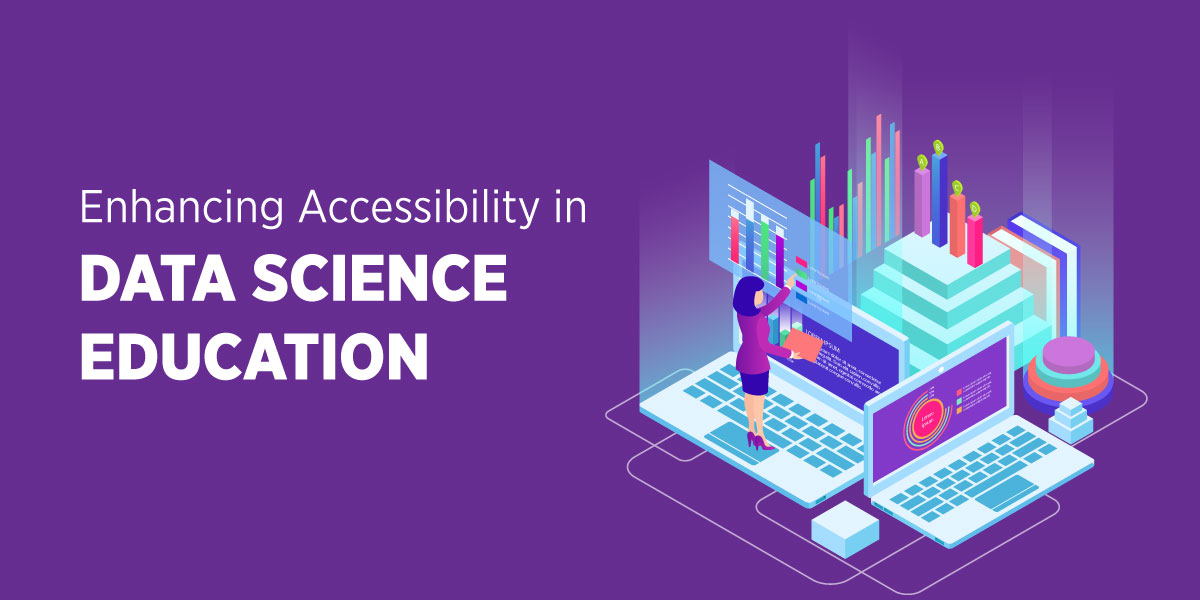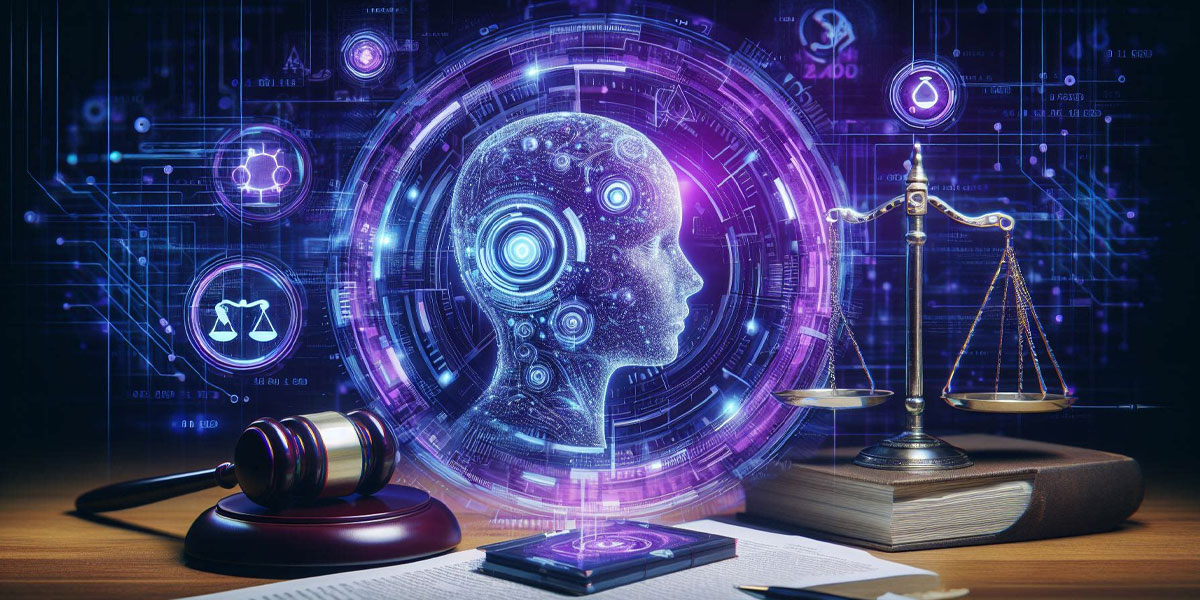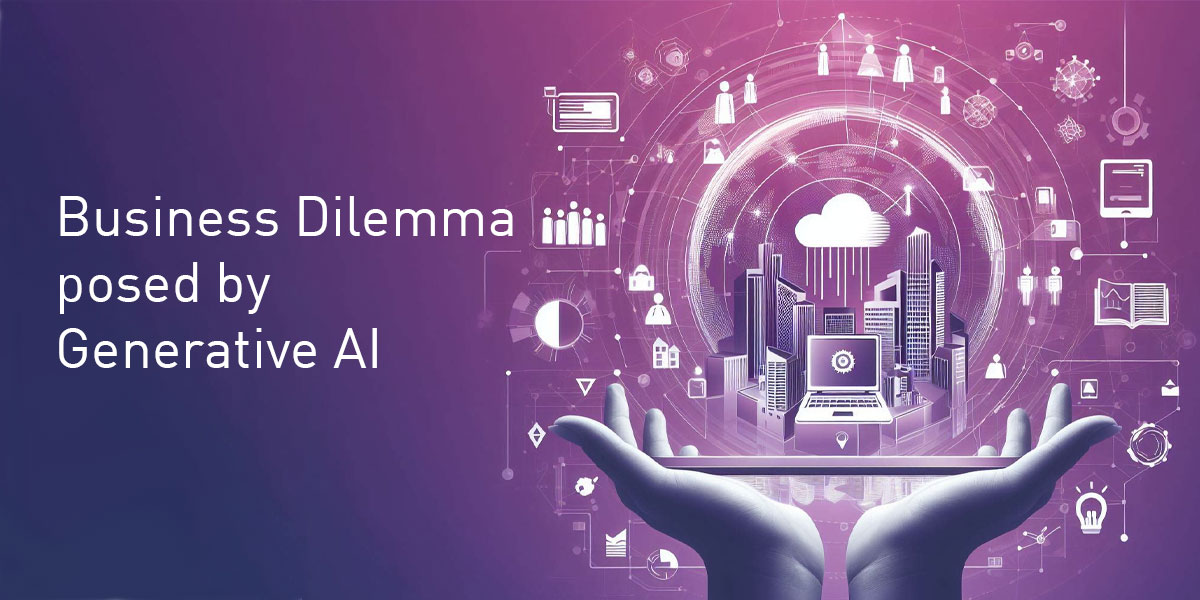Necessary cookies are absolutely essential for the website to function properly. These cookies ensure basic functionalities and security features of the website, anonymously.

Enhancing Accessibility in Data Science Education
In the field of data science, ensuring inclusive and accessible learning environments for individuals with disabilities is not just a necessity but a responsibility. This blog delves into the various factors of making data science education more inclusive, detailing the strategies, examples and context behind each approach.
The Imperative of Inclusive Research and Learning Groups
The journey towards inclusive data science education begins with the composition of research and learning groups. The presence of individuals with disabilities in these groups is not merely a token gesture towards diversity but a critical step towards enhancing the quality and relevance of data science education. A case in point is the initiative by the Best Practices of Data Science Working Group at BIDS, which underscores the value of diverse perspectives in identifying and addressing design errors that could otherwise hinder the learning process.
The representation of individuals with disabilities in these groups is not just about including them in accessibility advocacy roles but rather about the rich insights and perspectives they bring to the table. Statistics from Pew Research Centre highlight that approximately 20% of the US population faces accessibility challenges. Ensuring that learning groups reflect this demographic proportion is not just about fairness; it's about capturing a complete range of human perspectives.
Rethinking Learning Platforms for Greater Accessibility

In my case specifically, my deafness presents little problem since I can switch on subtitles on videos (and in Spanish, my native languate) and the instructions for exercises are resented in written form rather than verbaly.
Image credit: Datacamp Learner Stories
Digital learning platforms have a pivotal role in making data science education accessible. DataCamp’s approach to accessibility offers an illustrative example. The platform's adaptation to cater to learners with hearing impairments, like Cesar, who completed over 60 courses, demonstrates the impact of thoughtful design. Features like subtitles in multiple languages and written instructions for exercises significantly lowered barriers to learning.
The importance of such features extends beyond individual courses; it signifies a shift in how digital education platforms perceive and respond to the diverse needs of learners. Ensuring compatibility with screen readers, providing high-contrast designs and constantly testing for accessibility across various browsers and operating systems are not just technical enhancements.
Embracing Diverse Learning Styles in Data Science Education
Acknowledging and catering to diverse learning styles is an essential aspect of making data science education more accessible. This approach entails moving beyond traditional teaching methods to embrace a variety of learning preferences. For instance, visual learners benefit significantly from graphic organisers and mind-mapping tools that allow them to understand and present complex ideas visually.
Auditory learners, on the other hand, engage better with content that they can listen to. Whether it's a document read aloud or a lecture, the auditory dimension of learning is critical for these individuals. They often prefer to process their thoughts by speaking out loud and technologies like dictation tools on tablets or computers enhance their learning experience.
Tactile learners require a more hands-on approach to learning. They thrive in environments where they can physically interact with the subject matter, be it through activities, lab work or even real-world applications of data science concepts. Providing opportunities for movement and physical engagement with learning materials is key to accommodating this style of learning.
Lastly, text-based learners, who still form a significant portion of the student population, prefer assimilating and producing ideas through reading and writing. This traditional method, well-established in most educational settings, involves activities like essay writing, research and extensive reading.
The challenge for educators in data science is to blend these diverse learning styles into a cohesive and comprehensive educational experience. This blending not only ensures that all students have access to the learning but also enriches the educational experience for everyone involved.
The Craft of Creating Accessible Learning Materials
The format and layout of educational materials plays a crucial role in accessibility. The choice of fonts, colours and contrasts greatly affects the legibility of texts, especially for learners with low vision or learning difficulties. Similarly, the structure of documents using headings, built-in styles and lists improves their readability and compatibility with screen readers.
Another key aspect is the inclusion of alt text for images, ensuring that visual content is accessible to those with little or no vision. This practice involves providing descriptive text that captures the essence of the image, allowing screen readers to convey this information to the visually impaired.
The accessibility of formats like PDFs and videos is critical. PDFs need to be scanned with Optical Character Recognition (OCR) tools to ensure that the text is selectable and readable by screen readers. Videos, an increasingly popular educational tool, must include features like closed captions to make them accessible to individuals with hearing impairments.
Building a Culture of Empathy and Inclusion
Empathy in the context of data science education involves understanding and anticipating the diverse needs of learners. It's about designing and delivering content that considers its access to the widest possible audience, so as to include access for anyone with disabilities.
This cultural shift also involves challenging and changing long-standing attitudes and practices in academia and industry. It calls for an environment where inclusive practices are not just encouraged but are the norm. This shift is not just the responsibility of educators and administrators, it requires the active participation and advocacy of all stakeholders in the data science community.
In addition to institutional policies, community engagement plays a crucial role. This includes workshops, webinars and discussions that focus on the importance of accessibility in data science. These forums provide opportunities for sharing best practices, exploring new tools and technologies and fostering a collaborative environment focused on making data science accessible to all.
Conclusion: The Way Forward in Accessible Data Science Education
Making data science learning accessible for individuals with disabilities is a challenge that requires a concerted effort from educators, institutions and the entire data science community. By embracing diversity in research and learning groups, adapting learning platforms, acknowledging diverse learning styles, creating accessible learning materials and fostering a culture of empathy and inclusion, we can ensure that the field of data science is open to everyone.
This inclusive approach not only benefits those with disabilities but enhances the learning experience for all students, fostering a richer, more diverse field of study.






